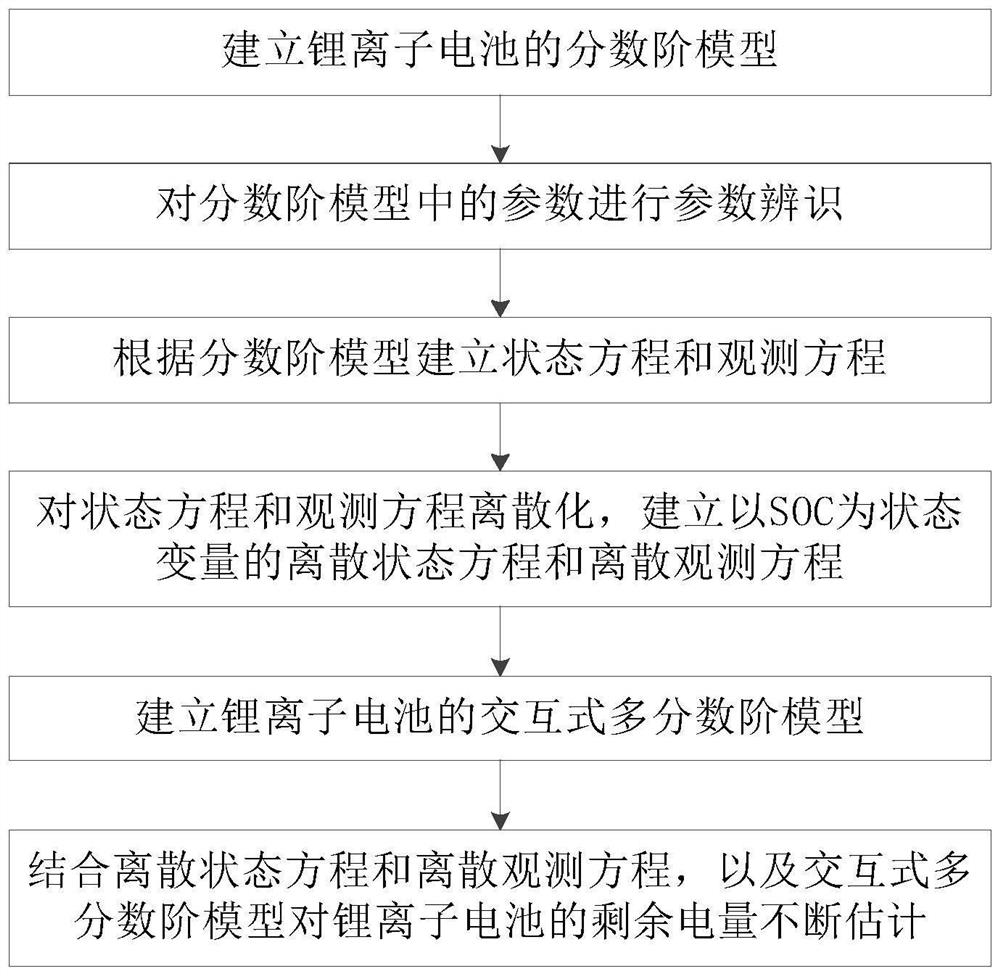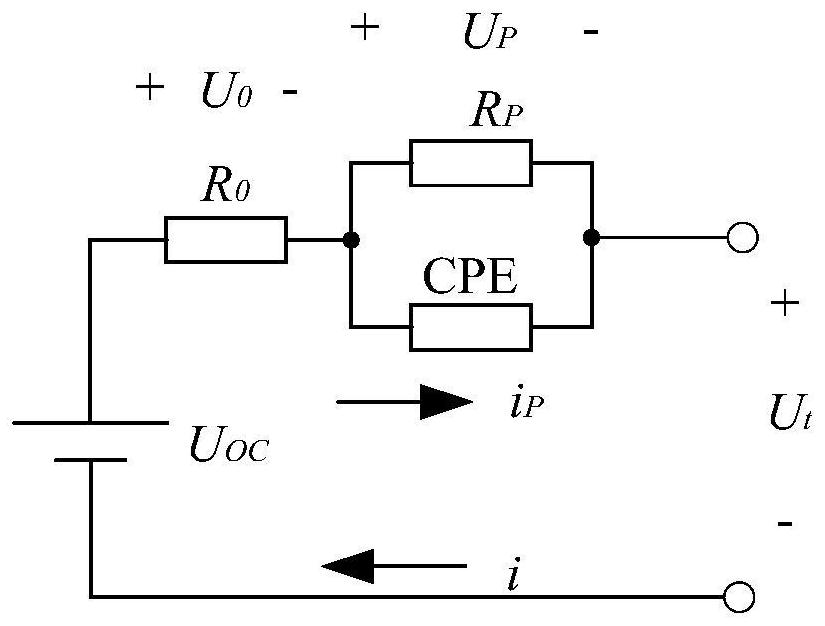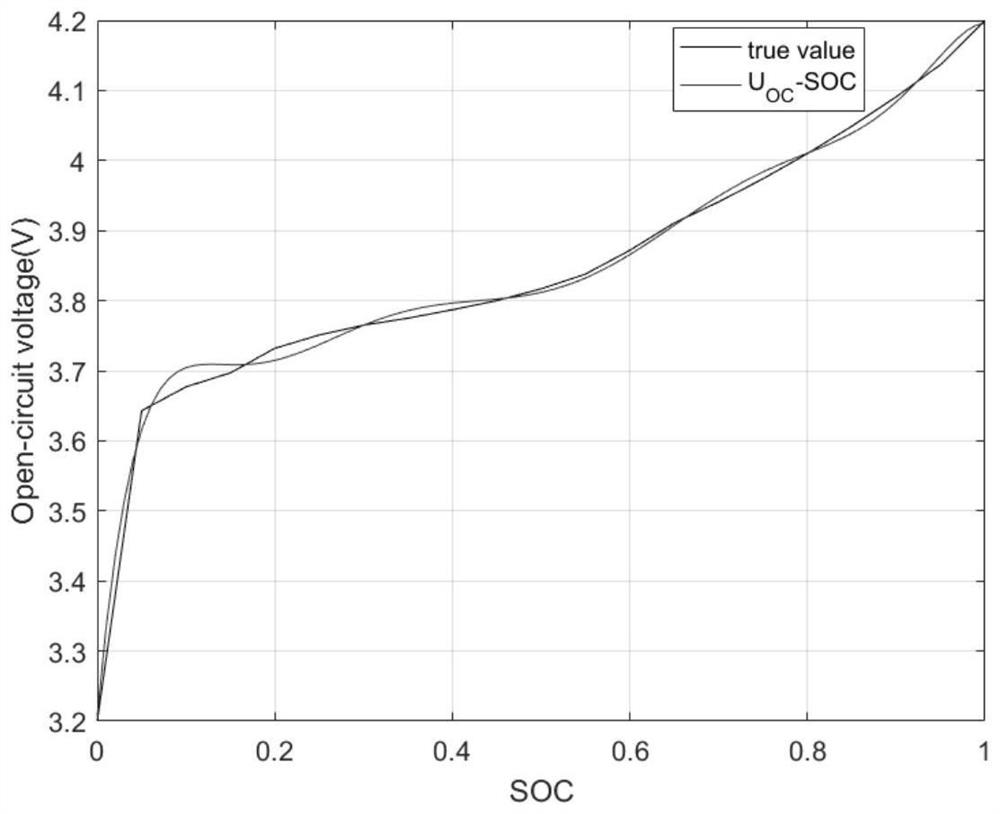Lithium ion battery remaining capacity estimation method
A technology for lithium-ion batteries and remaining power, applied in the direction of measuring electrical variables, measuring electricity, measuring devices, etc., to achieve the effects of good dynamic adaptability, reasonable design, and reduced complexity
- Summary
- Abstract
- Description
- Claims
- Application Information
AI Technical Summary
Problems solved by technology
Method used
Image
Examples
Embodiment Construction
[0108] Such as figure 1 As shown, the method for estimating the remaining power of the lithium-ion battery of the present invention includes:
[0109] Step 1, establishing a fractional order model of the lithium-ion battery;
[0110] Step 2, performing parameter identification on the parameters in the fractional order model;
[0111] Step 3, establishing a state equation and an observation equation according to the fractional-order model;
[0112] Step 4, discretizing the state equation and the observation equation, and establishing a discrete state equation and a discrete observation equation with SOC as the state variable;
[0113] Step 5. Establish an interactive multi-fractional model of lithium-ion batteries;
[0114] Step 6, combining the discrete state equation and discrete observation equation, and the interactive multi-fractional model to continuously estimate the remaining power of the lithium-ion battery.
[0115] In this example, if figure 2 As shown, the fra...
PUM
 Login to View More
Login to View More Abstract
Description
Claims
Application Information
 Login to View More
Login to View More - R&D
- Intellectual Property
- Life Sciences
- Materials
- Tech Scout
- Unparalleled Data Quality
- Higher Quality Content
- 60% Fewer Hallucinations
Browse by: Latest US Patents, China's latest patents, Technical Efficacy Thesaurus, Application Domain, Technology Topic, Popular Technical Reports.
© 2025 PatSnap. All rights reserved.Legal|Privacy policy|Modern Slavery Act Transparency Statement|Sitemap|About US| Contact US: help@patsnap.com



